 W
WFrancis Beverley Biddle was an American lawyer and judge who was Attorney General of the United States during World War II and who served as the primary American judge during the postwar Nuremberg trials. He also served as a United States Circuit Judge of the United States Court of Appeals for the Third Circuit.
 W
WLeo Thomas Crowley was a senior administrator for President Franklin D. Roosevelt as the head of the Foreign Economic Administration. Previously he had served as Alien Property Custodian and as chief of the Federal Deposit Insurance Corporation. Late in the 1930s, senior Washington officials discovered that Crowley had embezzled from his banks in Wisconsin in the 1920s and early 1930s. They covered it up. Biographer Stuart Weiss says, Crowley's is:the darker story of the businessman as speculator and embezzler, whose fraud was covered up in Wisconsin and Washington....[in part it is] the morally complex and compelling story of Crowley as a bureaucrat and politician in Washington, administering multiple major agencies, often simultaneously;...but also deeply involved in conflicts of interest a later generation would find unacceptable and even incomprehensible.
 W
WHomer Stille Cummings was a U.S. lawyer and political figure who was United States Attorney General from 1933 to 1939. He also was elected mayor of Stamford, Connecticut, three times before founding the legal firm of Cummings & Lockwood in 1909. He later served as chairman of Democratic National Committee between 1919 and 1920.
 W
WGeorge Henry Dern (1872–1936) was an American politician, mining man, and businessman. He is probably best remembered for co-inventing the Holt–Dern ore roasting process, as well as for his tenure as United States Secretary of War from 1933 to his death in 1936. He also served as the sixth Governor of Utah for eight years, from 1925 to 1933. Dern was a progressive politician who fought for tax reform, public education, and social welfare.
 W
WCharles Edison was an American politician, businessman, inventor and animal behaviorist. He was the Assistant and then United States Secretary of the Navy, and served as the 42nd Governor of New Jersey. Commonly known as "Lord Edison", he was a son of Thomas Edison and Mina Miller Edison.
 W
WJames Aloysius Farley was one of the first Irish Catholic politicians in American history to achieve success on a national level. He simultaneously served as chairman of the New York State Democratic Committee, chairman of the Democratic National Committee, and Postmaster General under the first two administrations of President Franklin Roosevelt. A business executive and dignitary and a Knight of Malta, Farley was commonly referred to as a political kingmaker, and he was responsible for Roosevelt's rise to the presidency. Farley was the campaign manager for New York State politician Alfred E. Smith's 1922 gubernatorial campaign and Roosevelt's 1928 and 1930 gubernatorial campaigns as well as Roosevelt's presidential campaigns of 1932 and 1936. Farley predicted large landslides in both, and revolutionized the use of polling data.
 W
WJames Vincent Forrestal was the last Cabinet-level United States Secretary of the Navy and the first United States Secretary of Defense.
 W
WHarry Lloyd Hopkins was the 8th Secretary of Commerce, and President Franklin Delano Roosevelt's closest advisor on foreign policy during World War II. He was one of the architects of the New Deal, especially the relief programs of the Works Progress Administration (WPA), which he directed and built into the largest employer in the country. In World War II, he was Roosevelt's chief diplomatic troubleshooter and liaison with Winston Churchill and Joseph Stalin. He supervised the $50 billion Lend Lease program of military aid to the Allies.
 W
WCordell Hull was an American politician from Tennessee best known as the longest-serving U.S. Secretary of State, holding the position for 11 years (1933–1944) in the administration of President Franklin Delano Roosevelt during most of World War II. Hull received the Nobel Peace Prize in 1945 for his role in establishing the United Nations, and was referred to by President Roosevelt as the "Father of the United Nations".
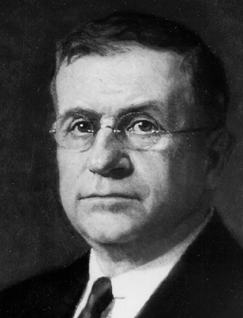 W
WHarold LeClair Ickes was an American administrator and politician. He served as United States Secretary of the Interior for 13 years, from 1933 to 1946, the longest tenure of anyone to hold the office, and the second longest-serving Cabinet member in U.S. history after James Wilson. Ickes and Labor Secretary Frances Perkins were the only original members of the Roosevelt cabinet who remained in office for his entire presidency.
 W
WRobert Houghwout Jackson was an American attorney and judge who served as an Associate Justice of the United States Supreme Court. He had previously served as United States Solicitor General and United States Attorney General, and is the only person to have held all three of those offices. Jackson was also notable for his work as Chief United States Prosecutor at the Nuremberg trials of Nazi war criminals following World War II.
 W
WJesse Holman Jones was an American Democratic politician and entrepreneur from Houston, Texas. Jones managed a Tennessee tobacco factory at age fourteen, and at nineteen, he was put in charge of his uncle's lumberyards. Five years later, after his uncle, M. T. Jones, died, Jones moved to Houston to manage his uncle's estate and opened a lumberyard company, which grew quickly. During this period, Jesse opened his own business, the South Texas Lumber Company. He also began to expand into real estate, commercial building, and banking. His commercial building activities in Houston included mid-rise and skyscraper office buildings, hotels and apartments, and movie theaters. He constructed the Foster Building, home to the Houston Chronicle, in exchange for a fifty percent share in the newspaper, of which he acquired control in 1926.
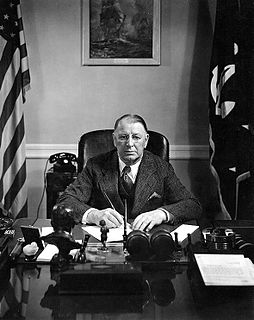 W
WWilliam Franklin Knox was an American politician, newspaper editor and publisher. He was also the Republican vice presidential candidate in 1936, and Secretary of the Navy under Franklin D. Roosevelt during most of World War II. On December 7, 1941, Knox flanked by his assistant John O’Keefe walked into Roosevelt's White House study at approximately 1:30 p.m. EST announcing that Japan had attacked Pearl Harbor. Knox was mentioned by name in Adolf Hitler's speech of December 11, 1941, in which Hitler asked for a German declaration of war against the United States.
 W
WHenry Morgenthau Jr. was the United States Secretary of the Treasury during most of the administration of Franklin D. Roosevelt. He played a major role in designing and financing the New Deal. After 1937, while still in charge of the Treasury, he played the central role in financing United States participation in World War II. He also played an increasingly major role in shaping foreign policy, especially with respect to Lend-Lease, support for China, helping Jewish refugees, and proposing to prevent Germany from again being a military threat.
 W
WWilliam Francis Murphy was a Democratic politician and jurist from Michigan. He was named to the Supreme Court of the United States in 1940 after a political career that included serving as United States Attorney General, Governor of Michigan and Mayor of Detroit. He also served as the last Governor General of the Philippine Islands and the first High Commissioner of the Philippines.
 W
WFrances Perkins was an American workers-rights advocate who served as the U.S. Secretary of Labor from 1933 to 1945, the longest serving in that position, and the first woman appointed to the U.S. Cabinet. As a loyal supporter of her friend, Franklin D. Roosevelt (FDR), she helped pull the labor movement into the New Deal coalition. She and Interior Secretary Harold L. Ickes were the only original members of the Roosevelt cabinet to remain in office for his entire presidency.
 W
WDaniel Calhoun Roper was a U.S. administrator who served as the 7th United States Secretary of Commerce under President Franklin D. Roosevelt, and was the 5th United States Ambassador to Canada from May 19, 1939 until August 20, 1939.
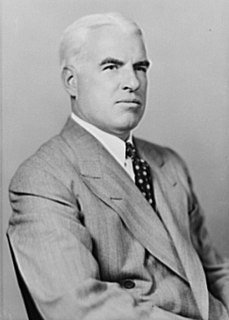 W
WEdward Reilly Stettinius Jr. was an American businessman who served as United States Secretary of State under Presidents Franklin D. Roosevelt and Harry S. Truman from 1944 to 1945, and as U.S. Ambassador to the United Nations from 1945 to 1946.
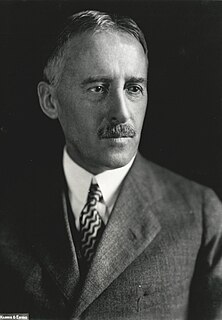 W
WHenry Lewis Stimson was an American statesman, lawyer, and Republican Party politician. Over his long career, he emerged as a leading figure in U.S. foreign policy by serving in both Republican and Democratic administrations. He served as Secretary of War (1911–1913) under President William Howard Taft, Secretary of State (1929–1933) under President Herbert Hoover, and Secretary of War (1940–1945) under Presidents Franklin D. Roosevelt and Harry S. Truman.
 W
WClaude Augustus Swanson was an American lawyer and Democratic politician from Virginia. He served as U.S. Representative (1893-1906), Governor of Virginia (1906-1910), and U.S. Senator from Virginia (1910-1933), before becoming U.S. Secretary of the Navy under President Franklin D. Roosevelt from 1933 until his death. Swanson and fellow U.S. Senator Thomas Staples Martin led a Democratic political machine in Virginia for decades in the late 19th and early 20th century, which later became known as the Byrd Organization for Swanson's successor as U.S. Senator, Harry Flood Byrd.
 W
WHenry Agard Wallace was an American politician, journalist, and farmer who served as the 11th U.S. Secretary of Agriculture, the 33rd vice president of the United States, and the 10th U.S. Secretary of Commerce. He was also the presidential nominee of the left-wing Progressive Party in the 1948 election.
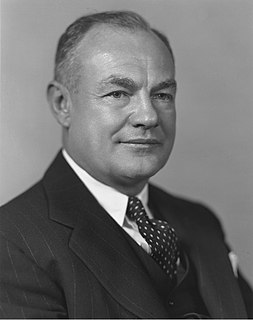 W
WClaude Raymond Wickard was a Democratic politician who served as the Secretary of Agriculture during the administrations of Presidents Franklin D. Roosevelt and Harry S. Truman from 1940 to 1945.
 W
WWilliam Hartman Woodin was a U.S. industrialist. He served as the Secretary of Treasury under Franklin Roosevelt in 1933.
 W
WHarry Hines Woodring was an American politician. A Democrat, he was the 25th Governor of Kansas and was Secretary of War in President Franklin Delano Roosevelt's administration from 1936 to 1940. He was also the United States Assistant Secretary of War from 1933 to 1936.